Confessions of a yuzu grower: The couple who grow the tangy-but-tasty fruit in Horowhenua
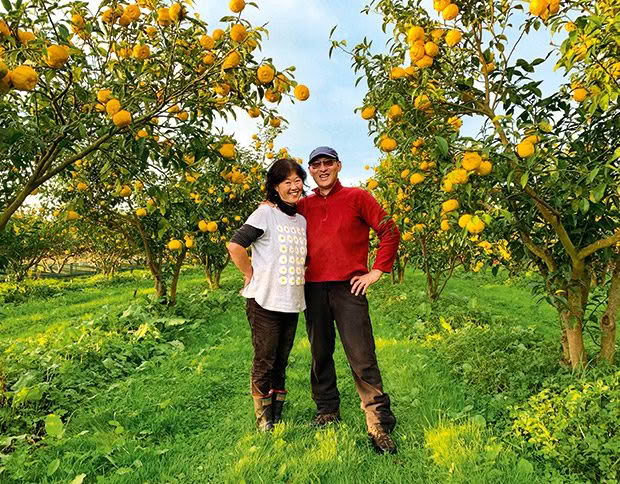
You don’t eat the fruit, they have little or no juice, and the tree may grab you and never let go. Meet the amazing yuzu.
Words: Nadene Hall Images: William Chun, Neville Chun
Who: Neville & Junko Chun
What: yuzu growers, NZYuzu
Land: 1ha (2.5 acres)
Where: Horowhenua, 100km north of Wellington
Web: facebook.com/nzyuzu
If you ask most New Zealanders, they have no idea what a yuzu is. That made the decision to grow them commercially a bad business plan, laughs Neville Chun. He’s NZ’s largest producer and one of only a few local growers of the rare citrus.
“I didn’t even know about yuzu until I met (wife) Junko, who is Japanese. I was in the garden centre business, and I knew a lot about citrus, but it wasn’t familiar to me.”
Junko was keen to have a tree, so horticulturalist Neville went on a quest to find one. It took a year. “I finally came across a citrus grower in Tauranga. In his ornamental section, he had yuzu listed with a really, brief description: very sour, very thorny.
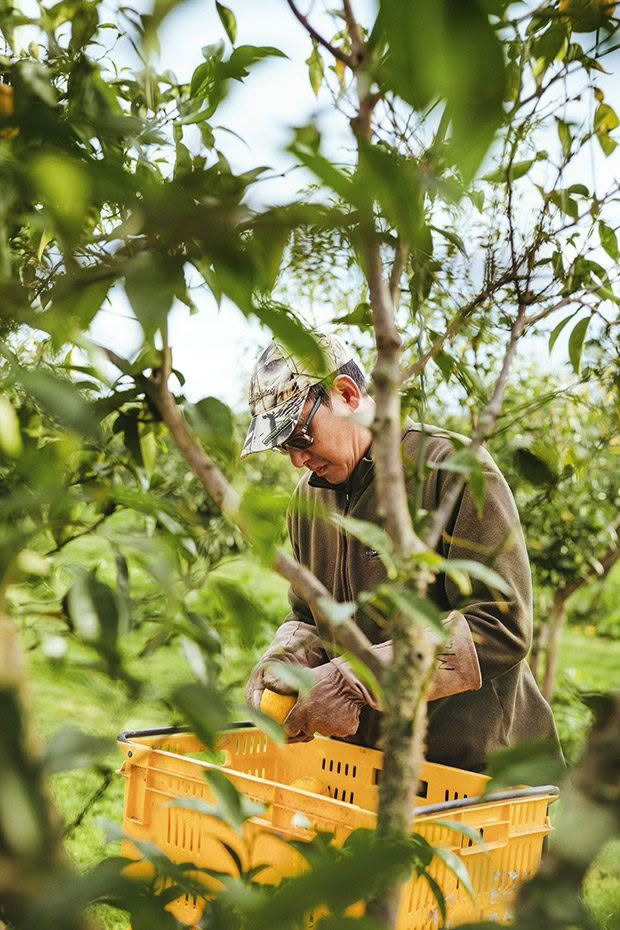
The Chuns do a lot of pruning. The drawback is it causes harvest to be cyclical – heavy one year, light the next – but it does open up the tree, so it’s easy to see and reach through.
“When I rang him, he basically swore about them. ‘They have these bloody sour fruit that fall all over the place, and they’ve got these bloody long thorns that are so sharp, you’d die if you fell on a tree’. I wasn’t sure if I’d hit the jackpot or not.”
But he had, and he bought the lot, growing them on in his home garden and selling trees to enthusiasts. It was a few years before Neville and Junko thought about growing the fruit commercially.
“That was only based on the fact that Junko likes them,” says Neville. “We thought, let’s see if we can grow more of these trees, without any business plan, without anyone in New Zealand knowing what these things are.”
WHAT IS YUZU?
The complex DNA of citrus means scientists worldwide are still arguing about the origins of yuzu (Citrus junos). When you start reading the research, it quickly descends into a dizzying family tree.
Scientists currently believe yuzu is a hybrid of a mandarin and the rare ichang papeda (Citrus cavaleriei). The ichang papeda is a cold-tolerant, slow-growing wild citrus with lemon-scented leaves and lumpy-looking, lime-like fruit (and considered to be the most likely ‘parent’ of different lime varieties). It was discovered by US Botanist Frank Meyer, who also found the lemon variety that now bears his name (Meyer).
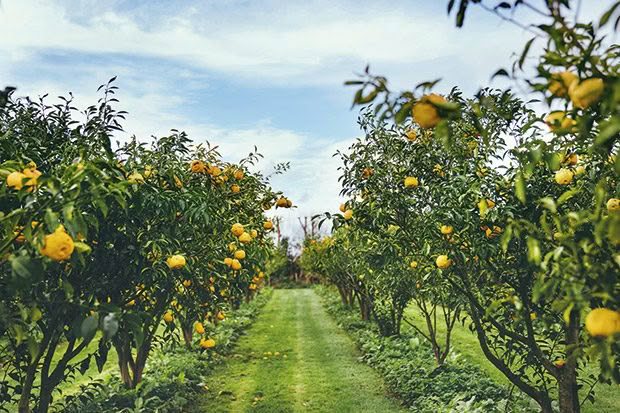
Unpruned, yuzu will sprawl out to 3m wide. The dense foliage and razor-sharp thorns make it impossible to pick the fruit. The Chuns prune to a ‘vase’ shape, creating an open centre for an easier harvest.
A ripe yellow yuzu is about the size of a lemon, but with a flatter top and bottom, more like a mandarin or very small grapefruit. The lumpy skin is very soft and looks similar to a tangelo. It’s enormously popular in Japan, and with chefs, food producers, and brewers worldwide.
Unripe, green yuzu peel is cold cured into a mustard called yuzu koshu, mixed with chillies and salt. The soft, floral zest of ripe yuzu is grated or shredded, and sprinkled on noodles, salad, soup, drinks, and meat, or mixed into mayonnaise or aioli. Junko loves to put a little on top of fish dishes. The ripe fruit is used to create yuzu cha, a flavouring added to drinks, desserts, and baking.
“They taste horrible (fresh) – oh my god, so sour – so you’ve got to process them to get the benefits,” says Neville. “It’s really hard to describe (the flavour), sort of a combination of grapefruit, orange, lemon, and mandarin.”
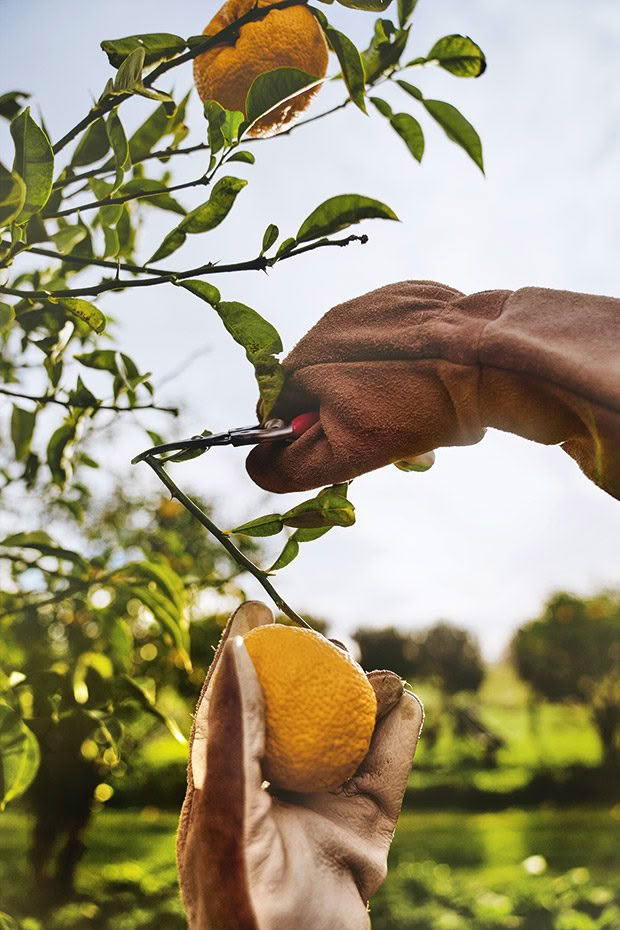
Unlike other citrus, there’s very little flesh or juice inside, mostly membrane and seeds. Some fruit have no juice at all. Neville says he can see why people are puzzled by yuzu.
“If you cut one open, you’d think ‘what is this all about?’ The tree grows vigorous spiky thorns. It’s not a very pretty tree. But the flavours are intriguing, and it really opens up the imagination; I think that’s why it’s so popular with chefs because they can be so creative with it.”
THE YUZU BLOCK
Neither Neville or Junko had ever lived rurally before buying their first block. “If you want to buy something good horticulturally (in the wider Wellington region), you’re looking at 15ha blocks, way out of our league. Finally, we found this small hectare of land, subdivided off a kiwifruit orchard. I dug a few holes, as you do. The spade went straight down, and it was a beautiful, deep, dark loam.”
They contracted a citrus nursery to do the specialist propagation required to get new trees from their mother stock. A year and a half later, they planted their first yuzu. Two weeks later, the trees were gone.
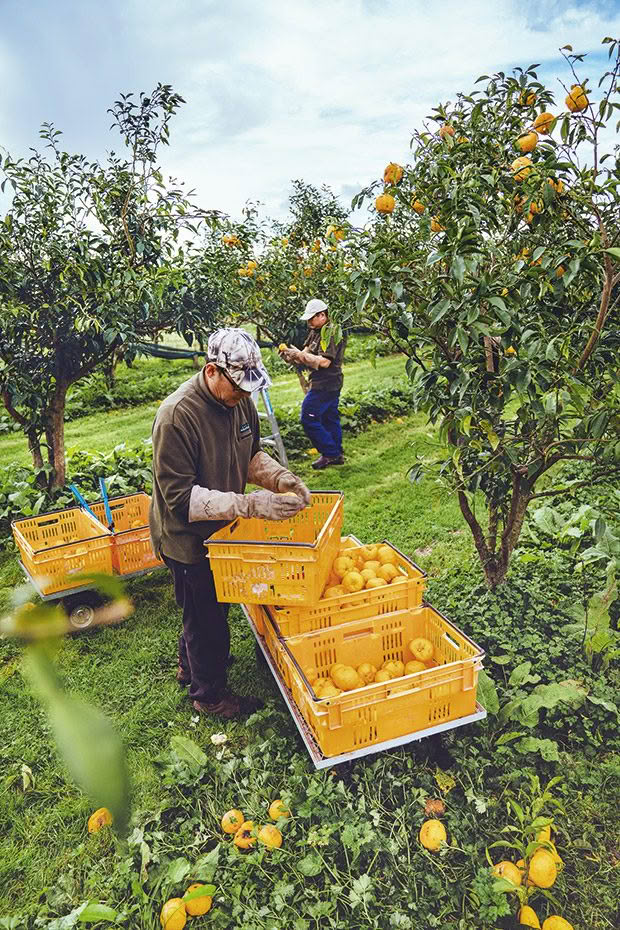
“They were all eaten,” says Neville. He still sounds outraged. “Rabbits, hundreds of bloody rabbits came in and thought ‘this is something new!’ We’re in an area where it’s all market gardens, and they must have gotten tired of lettuce and cabbage. The trees were eaten to the ground, it was unbelievable. That was the first time we thought, ‘we can’t do this, we’re townies’.”
They persevered. The next lot of yuzu were planted and protected. Again, the rabbits prevailed. Today, they encircle young trees with 1m-high, bunny-beating netting.
It took a couple of goes to stymie the rabbits, but Neville says the challenges kept coming. “You’d leave it for a week or two, and the weeds and grass would be taller than the plants. How can grass grow that fast, from zero to 1m in two weeks?”
WHAT YUZU LIKE
Yuzu trees do best in typical citrus growing conditions. They like:
• free draining, organically enriched soil;
• full sun;
• shelter from the wind;
• weed, grass, and pest control around young trees;
• regular feeding.
The Chun’s orchard is in its second year of organic certification. They use organic fish fertiliser, oils, soil stimulants, and sprays. The biggest problem is thrips that damage leaves and fruit. The Chuns don’t irrigate their trees, and most of the time, they don’t need to. However, they did lose some young trees during a drought a couple of years ago.
Yuzu is more cold-hardy than most citrus – Neville and Junko have seen them growing in cold mountain conditions in Japan – but only if they have protection from the wind. “We found every winter the foliage was getting stripped by cold winds. It would take them a month or so to recover in spring. We put up 3m windbreaks which helped a lot as after winter, trees aren’t defoliated.”
HOW TO GROW YUZU & STAY SAFE
In the wild, yuzu grows into a sprawling, bushy tree, 3.5m high by 2-3m wide. Thorns protect the glowing golden fruit and make it dangerous to work with, says Neville. He’s only half-joking.
“There’s folklore stories in Japan where people have come across yuzu pickers who are stuck inside the tree and can’t get out,” says Neville. “The thorns are huge, long, and one of the sharpest things I’ve come across.”
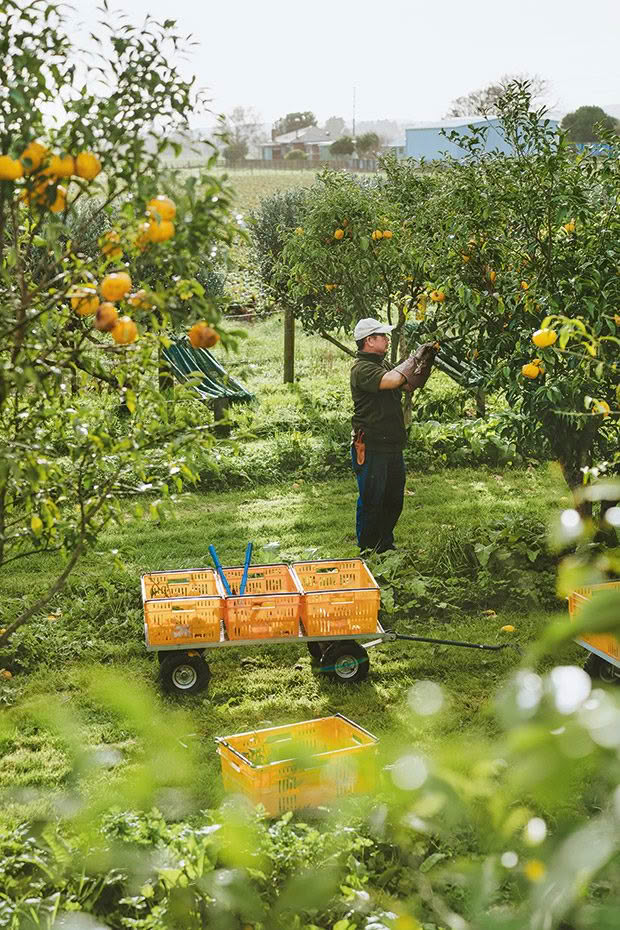
Neville and Junko keep their trees at around 2.5m for easier picking. In the wild, yuzu reaches over 3m.
To prevent capture in their orchard, Neville and Junko carefully prune them to a comfortable picking height (2.5m), and in a vase shape more typically used with apples, pears, and peaches. Branches are widely spaced, angling out, up, and over. It means they don’t have to reach through thick foliage and branches to harvest the soft, easily damaged ripe fruit. It also keeps the centre of the tree open to airflow and sunlight.
“The skin is very soft, so we have to handle them very gently. Wild goats would eat them (in the wild) if they hadn’t developed these huge thorns.”
Despite their careful regime, when it’s time to pick (April for green fruit, May-June for yellow), the couple armour up in long sleeves, covered by leather gauntlets. “You’ve got to be completely aware of what you’re picking and how you get (your arm) into the tree to get (a fruit). That’s why you need a vase shape, or you’ll have trouble getting your arm back out.”
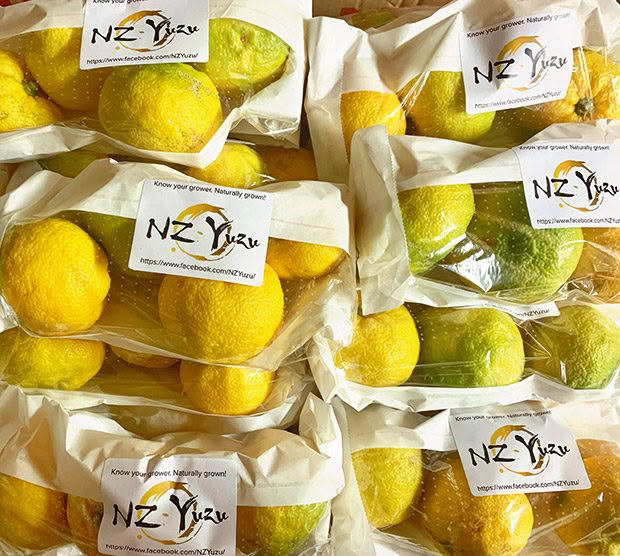
Packs of four fruit retail for around $8.
A good tree will yield several crates of yuzu, around 10-20kg, but crops are cyclical. “We keep mucking around with them, trimming and pruning them. That means one year we get a good crop, the next is sparse.”
Their original plan was to export the fruit to Japan. “We weren’t thinking at all of the New Zealand market – if you ask most Kiwis ‘what’s a yuzu?’, it’s completely unknown,” Neville laughs. “You’re investing in land, you have to invest in equipment and infrastructure, and it ends up costing you three times what you thought.”
To their surprise, local buyers take every fruit they grow.
YUZU BOOZE & OTHER DELICIOUSNESS
It took six years to produce their first big crop. Two very patient buyers took the lot and turned it into an award-winning brew. “I was selling plants on Trade Me, and these two brothers bought some stuff off me. I didn’t know them from a bar of soap.”
One of them noticed the family’s yuzu tree in the garden and asked about it. “He said, ‘I brew beer in a garage, when you get some fruit, I wouldn’t mind making beer from it, here’s my number’.
“Three years passed, and I’d forgotten all about it, and he rings me to ask how the yuzu is coming along.”
The man was Peter Gillespie. He and his brother Ian founded Wellington craft brewery Garage Project. They bought Neville and Junko’s entire inaugural crop. They peeled and juiced it by hand, added honeydew melon, and used it to create a beer they called Wabi Sabi – “It’s got a very strong yuzu flavour,” says Neville. It promptly won a gold medal at the NZ Brewers Awards in the Specialty, Experimental, and Aged category.
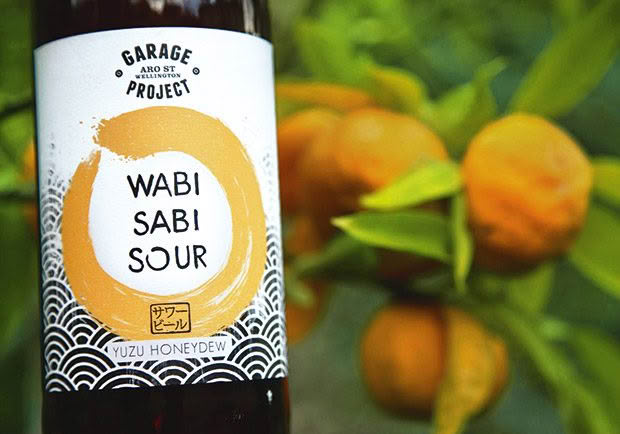
Garage Project’s award-winning yuzu and honeydew beer.
Five years later, the now hugely successful Garage Project is still the Chun’s biggest customers. They’ve since created other award-winning brews from yuzu, including Pernicious Yuzu Weed (an Indian pale ale using green yuzu) and Yuzukoshō (a pilsner with green yuzu, green chilli, and salt).
Another regular customer is Martinborough olive grower Nalini Baruch of Lot Eight. She was the first in the world to use the agrumato method with yuzu, crushing the skins with olives, then pressing them together to create a fragrant oil.
The couple also sells fruit directly to chefs – world-renowned chef Monique Fiso of Hiakai visited the orchard earlier this year – foodies, and Wellington supermarket Moore Wilsons where a bag of 3-4 yuzu costs $7.95. If you want to buy fruit, you can message Neville via the NZ Yuzu Facebook page. The Chuns now have
400 trees and pick two crops a year. The first is unripe, green fruit in April.
“Green yuzu has a really strong, peppery-lime taste, almost like a kaffir lime with pepper,” says Neville. “The juice is very sour and intense, almost green (in colour), and the Japanese really relish that. It’s a common thing with a lot of Japanese crops, where (the Japanese) pick something completely unripe and make something delicious from it, then make something completely different with the ripe fruit.”
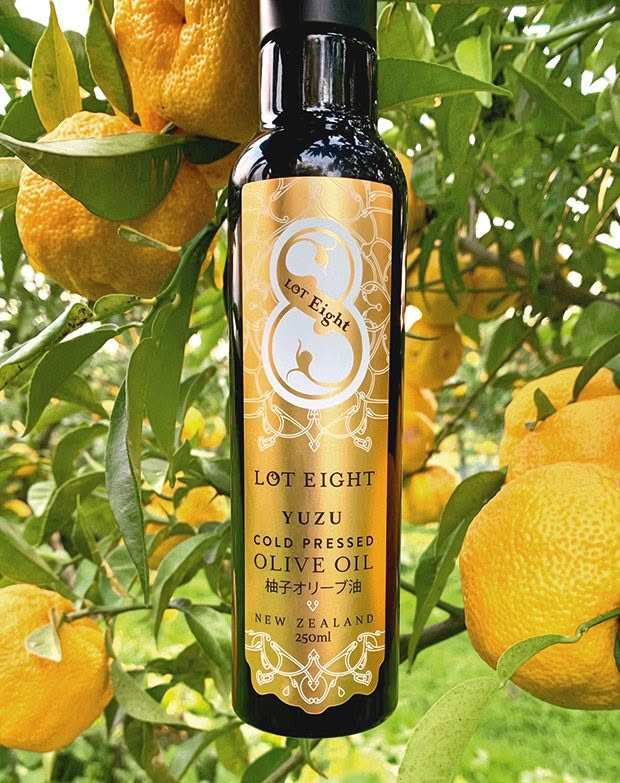
Lot 8’s yuzu-infused olive oil.
The green peel is turned into a savoury flavouring, such as yuzu kosho, a type of mustard made using chillies and salt. Freshly made yuzu kosho is inedible, says Neville. It’s extremely salty and burning hot. It needs to cold cure for at least three months, up to a year, to develop its unique flavour. “A really small amount would flavour a soup or a sauce, or you could use it as a replacement for wasabi. Put it in soya sauce and it gives it a beautiful flavour (known as ponzu).”
The main crop of ripe, yellow fruit is ready from mid-May until the end of June. “It’s a lot more floral. The juice is lighter, the peel is softer, less harsh. Instead of adding salt (to the peel), you add sugar and sweeter elements.”
One of the most popular recipes is yuzu cha (tea). The fruit is juiced (and the juice saved for use in other dishes). The peel and membranes are chopped, mixed with sugar, and then cold cured for 1-2 months. It turns into an aromatic, golden-coloured syrup.
“Soften some vanilla ice cream and mix it in, or drizzle over a pavlova,” says Neville. “The most popular thing to make is yuzu cha. Add it into a hot cup of water, or cold soda water for yuzu soda. It’s really up to the imagination of the person wanting to use it.”
5 REASONS SCIENTISTS ARE FASCINATED BY YUZU
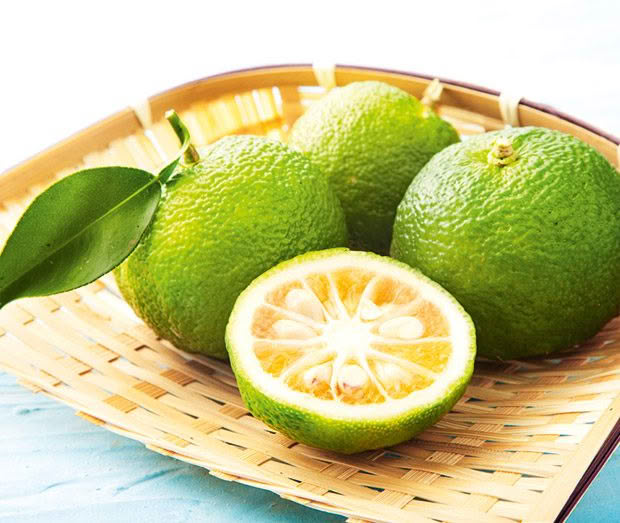
Green yuzu are also picked and sold.
1. The peel contains seven aromatic oils, some that don’t exist in any other plant.
2. It contains yuzuol, a citrus oil found nowhere else in nature and believed to be the main reason for yuzu’s distinctive aroma.
3. It’s rich in vitamins C and A (almost half a person’s daily needs), making it high in antioxidants.
4. Research shows two flavonoids in yuzu may help reduce blood clotting.
5. Inhaling the aroma may help reduce the heart rate and stress of anxious people. In Japan, people take a relaxing soak (yuzuyu) with whole or halved yuzu floating in hot springs or a bath.
MORE HERE
Introducing the new foodie favourite finger limes — how to grow them in New Zealand
Introducing the new foodie favourite finger limes — how to grow them in New Zealand
Love this story? Subscribe now!
 This article first appeared in NZ Lifestyle Block Magazine.
This article first appeared in NZ Lifestyle Block Magazine.

